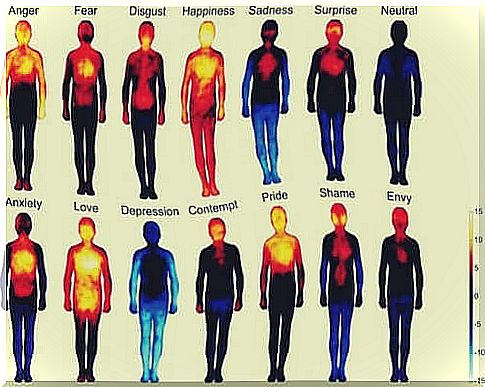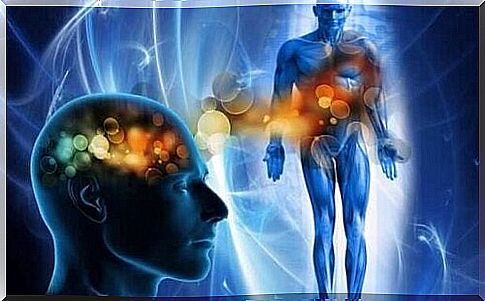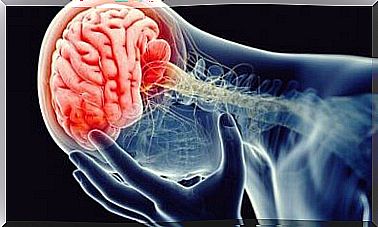Somatic Therapy: Freeing And Understanding Trapped Emotions

Somatic therapy helps us to understand and promote a correct harmony between body, mind and emotions. It is a holistic approach that makes use of different therapeutic strategies. Its purpose is to help us become aware of our somatic experiences, that is, those associated with traumatic events or stagnant emotions.
Sometimes we don’t give too much weight to the close relationship between mind, body and emotions. In this regard, a study carried out by Dr. Bruce Perry, director of the Children’s Mental Health Hospital in Alberta, Canada, is very interesting. The psychiatrist, also an expert in behavioral disorders in pediatric age, realized a rather curious aspect.
All children labeled by teachers as too nervous, bad tempered, or low school performers show clear progress if they engage in physical activity just before entering the classroom. After physical exercises they appear more relaxed and focused, considerably improving their reading and writing skills as well as mathematical ones.
The truth is that the nature of the special bond that is established between the body, our emotions and our cognitive performance is still not entirely clear to us. Let’s find out more about somatic theory!
Antonio Damasio
One of the most relevant figures in this field is Antonio Damasio, with his famous theory of the somatic marker. This term defines the way in which emotions arouse somestic sensations, a physiological model capable of mediating our processes of decision making and reasoning. Undoubtedly an exciting topic that contains the principles of somatic therapy at the base.

The goals of somatic therapy
Somatic therapy is a psychobiological approach aimed primarily at treating trauma. One of the premises behind this theory is that the body and mind cannot be treated as a unit, it is practically impossible to completely cure a person.
This technique was developed in 1971 by Berkeley Professor Standley Keleman. Its purpose was “to heal the physical, emotional and psychological nodes deriving from conflicts, events and unresolved experiences”.
The therapy has also positive feedback on the problems of anxiety, stress, depression, addiction and also to improve the quality of life in patients suffering from chronic pain. The efficacy of somatic therapy is still widely discussed, however the scientific documentation supporting it is now abundant.
Studies carried out at the University of Jerusalem and the International Trauma-Healing Institute of Los Angeles indicate that this therapy is useful for the treatment of post-traumatic stress. There are many cases of patients who have improved following abuse in childhood or involved in events related to natural disasters.

The goals of somatic therapy
We are faced with a psychobiological approach that integrates body awareness into the psychotherapeutic process.
- It starts from the idea that any trauma, complex event, problem or concern generates an impact on the autonomic nervous system.
- Instead of dissolving over time, complex emotions somatize in our organism. They do this in the form of digestive problems, hormonal or immune system imbalances, muscle aches, headaches, allergies …
- The therapist’s goal is to facilitate homeostasis. Therefore, reaching a harmony between mind and body, where nothing hurts us, where nothing hinders our ability to live the present without the weight of the past.
- During the somatic therapy sessions, tools are provided so that the patient can distinguish each emotion contained in his body.
- The difference with cognitive therapy is that in the latter the intervention starts from the body to reach the mind. Unveiling and understanding internal sensations, both visceral (body awareness) and musculoskeletal (proprioception and kinesthesia), allows the therapist to then reach emotional realities.
It should be noted that in recent years somatic therapy has found greater scientific support thanks to advances in neuroscience. One of the most relevant studies in this regard was that of Dr. Lauri Nummenmaa, professor of cognitive neuroscience at the University of Aalto in Finland.
The research, published in the journal Proceedings of the National Academy of Science of The United States of America ( PNAS ) , shows us the first body map of human emotions. Internal realities such as anger, fear, disappointment, hope, surprise or envy highlight a greater physiological activity in certain areas of our body.
How to free and understand the emotions trapped in our body
Dr. Peter Levine, a biophysicist and psychologist at Berkeley University in California, is one of the exponents of somatic therapy and argues that to promote the release of emotions, it is first of all important to “detach” them from our body. To do this, you need to be aware of the pathological imprint contained in our body.

The means to do this are as follows:
- Relaxation and deep breathing techniques;
- Physical exercises such as dancing, moving, stretching, etc.
- Vocal exercises.
For each person, one technique will be more effective than the others. The aim is to become aware of somatic experiences. Each sensation must evoke images and emotions, which will allow the therapist to understand what is happening in the patient.
Finally, it should be noted that this therapy is not immune to criticism. The main criticism refers to the fact that many people make the mistake of resorting to this strategy before they have received a clear diagnosis. Before resorting to it, in fact, it is essential to discard the presence of organic problems, diseases and hormonal alterations such as the thyroid.
Although very useful and interesting, the effectiveness of somatic therapy is not at the level of other therapies, such as cognitive-behavioral therapy. However, we cannot ignore its impact on today’s society.









